Sea Trial - Excess13
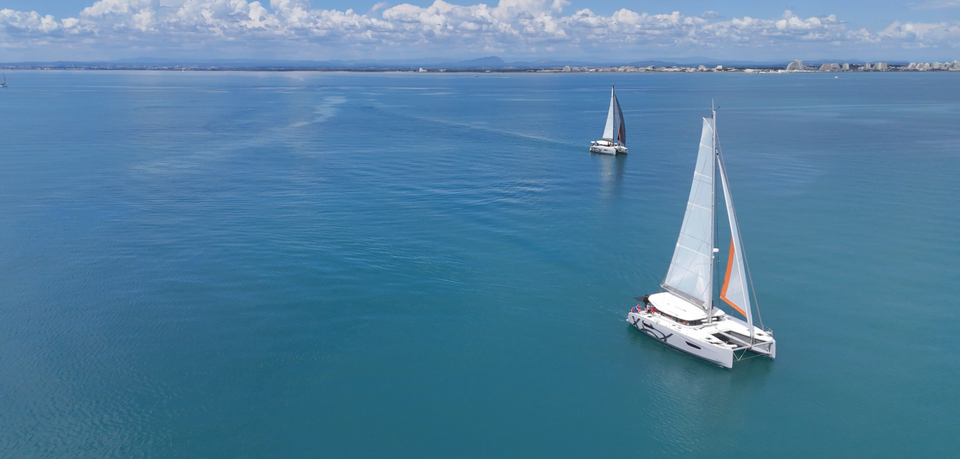
The more time we spent onboard the Excess cats at the boat show, getting a feel for the boats and all of the very well-done design details, the more we caught ourselves at least opening up to the brand and boat.
Open enough at least, to not say no when David suggested we join him and a few others aboard for a sea trial of the new Excess13. We eventually broke down and said yes — and that sea trial (if we're completely honest) is the day our path (and really, our entire set of ideas about liveaboard catamarans) started to turn.
When we showed up to the dock for the sea trial, we honestly thought it was going to be just another boat tour. As 8-10 people climbed aboard to see how the XCS13 sailed, there didn't seem to be any chance of it. No wind/breeze to speak of. Flat water. Full boat of people. We weren’t expecting anything real.
Even as we escaped the harbor under engine, the plotter was telling us there was less than 5 knots of wind, and we genuinely thought that when the team started raising the sail, it was simply for show — or for a nice motor sail for the photos.
But when they cut the engines and lifted the mainsail/unfurled the Code 0… and the boat actually started gracefully picking up speed through the water — we looked at each other in genuine shock.
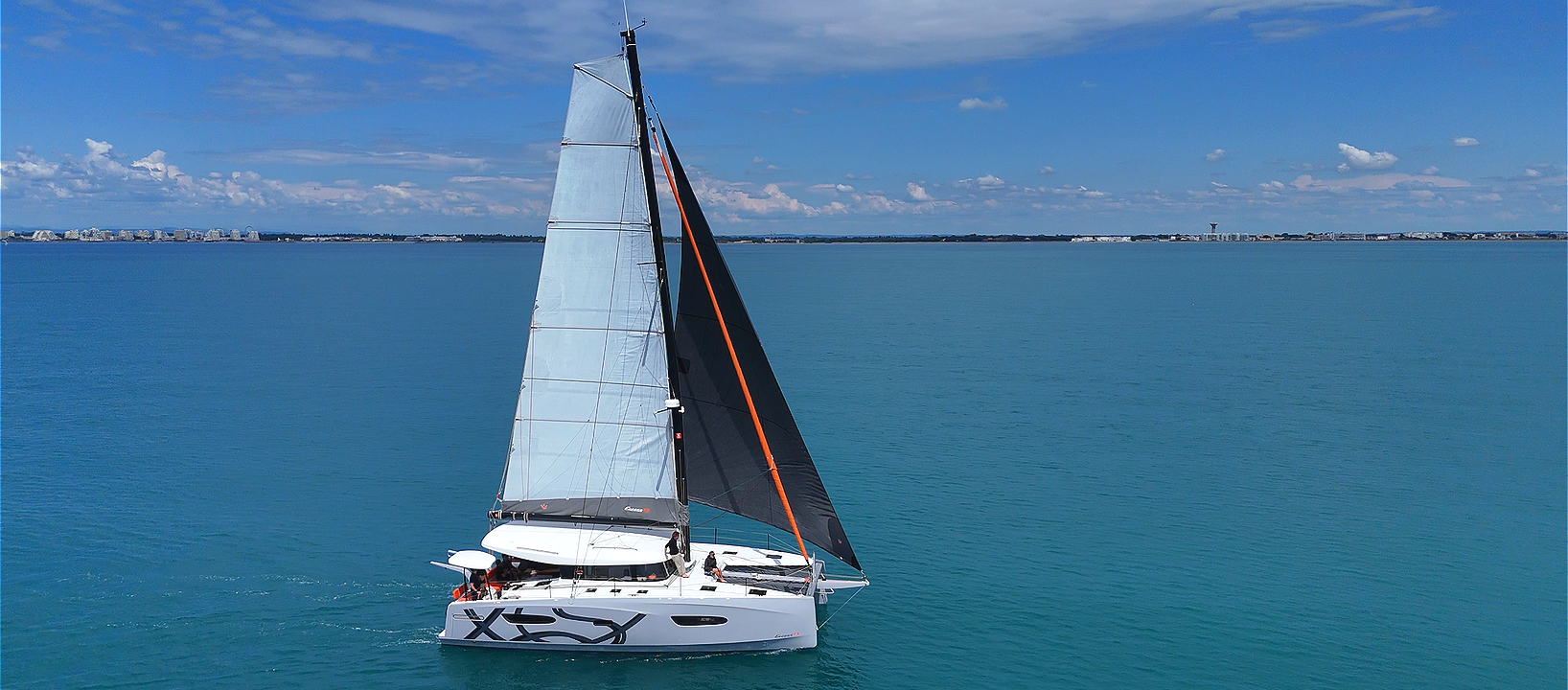
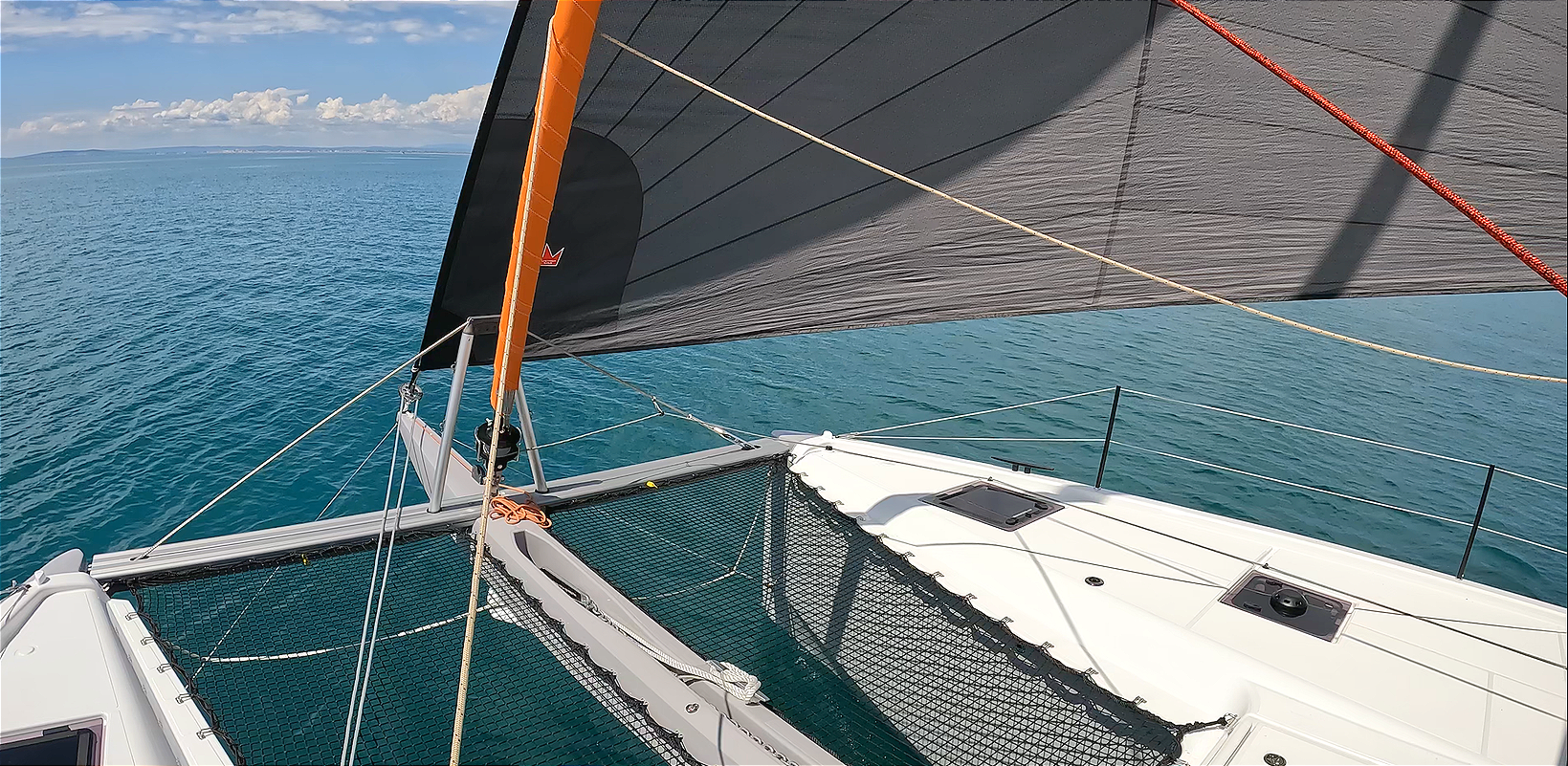
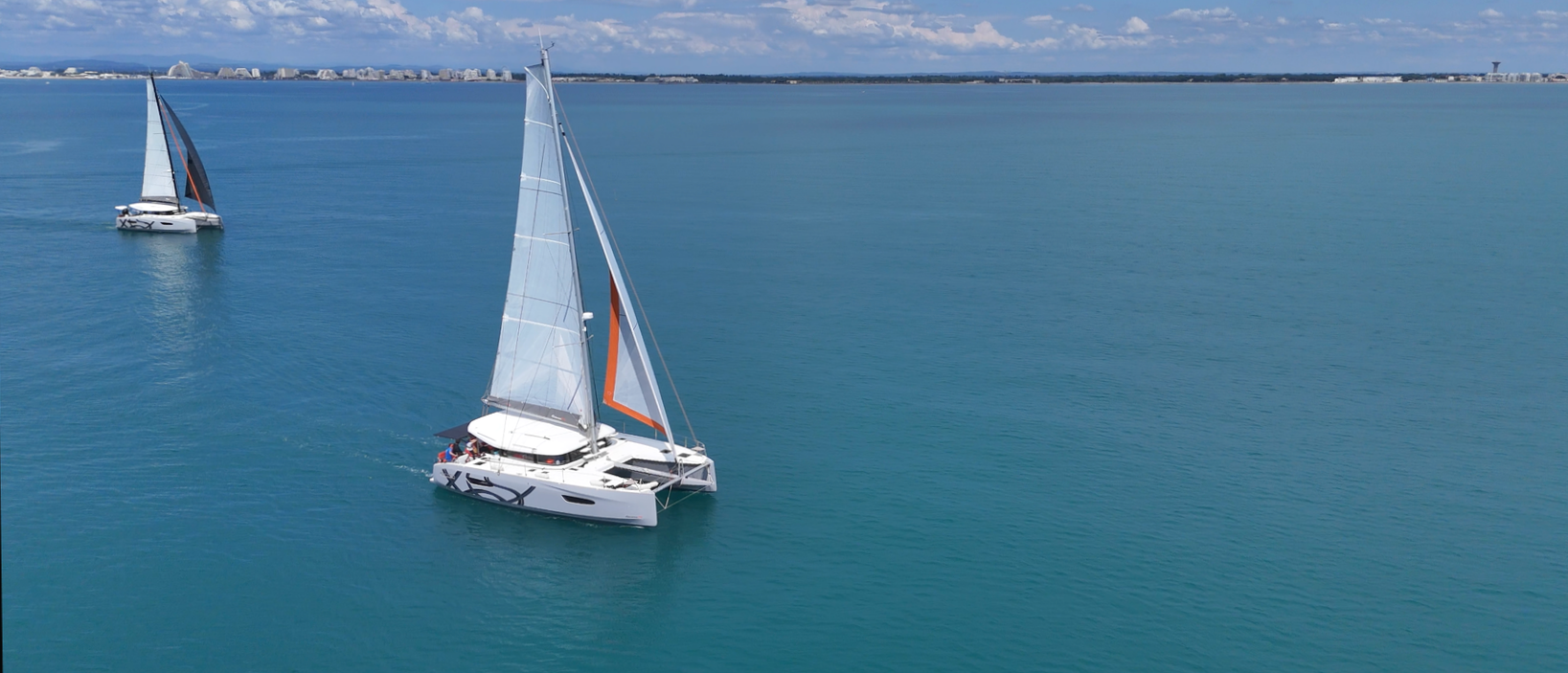
Even dead downwind with our Parasailor on svKarma, we wouldn’t be able to lift sails in this hint of a breeze. And while we certainly would have gone through the trouble to lift the sails if pointing upwind or on a beam reach (to add a half knot or so to our motoring), we could not have made Karma move under sail alone — at least not enough to make it worthwhile.
As the boat gained speed to at or near windspeed, everyone onboard was genuinely giddy. Obviously not the sporty sail we might have experienced in high winds (which I’m sure some of the monohull sailors/racers would have hoped for)… but certainly worth noting that all other boats in the bay — including several monohulls with sails raised — appeared to be standing perfectly still, while we were moving along at a decent clip. Truth be told, we were sailing at or above the speed we would plan as our average for Karma in any crossing, even with much higher winds.
Honestly, for us — those elements, and the resulting light-wind sail — might have been far more valuable than seeing how fast she could go in big winds. Besides, we could easily see on the chartplotter that she had already reached 18 knots — which we would have no doubt been trying to slow the boat down well before. We showed up barely hoping for a photo op... instead, we got a masterclass in light-wind performance.
We’ve long said that we’re liveaboards, not sailors. As much as we do love the act of sailing, we’re typically in this lifestyle for the remote destinations that living on a sailboat allows us to enjoy. Sailing, in most cases, is simply the means to an end, to get to those idyllic locations.
If I’m honest, we’ve never much minded the sail performance of our Bali catamaran. We weren’t as fast as our friends’ boats, but in most cases once we got underway and set sail, we enjoyed the experience — so it didn’t much matter how long it took to get there.
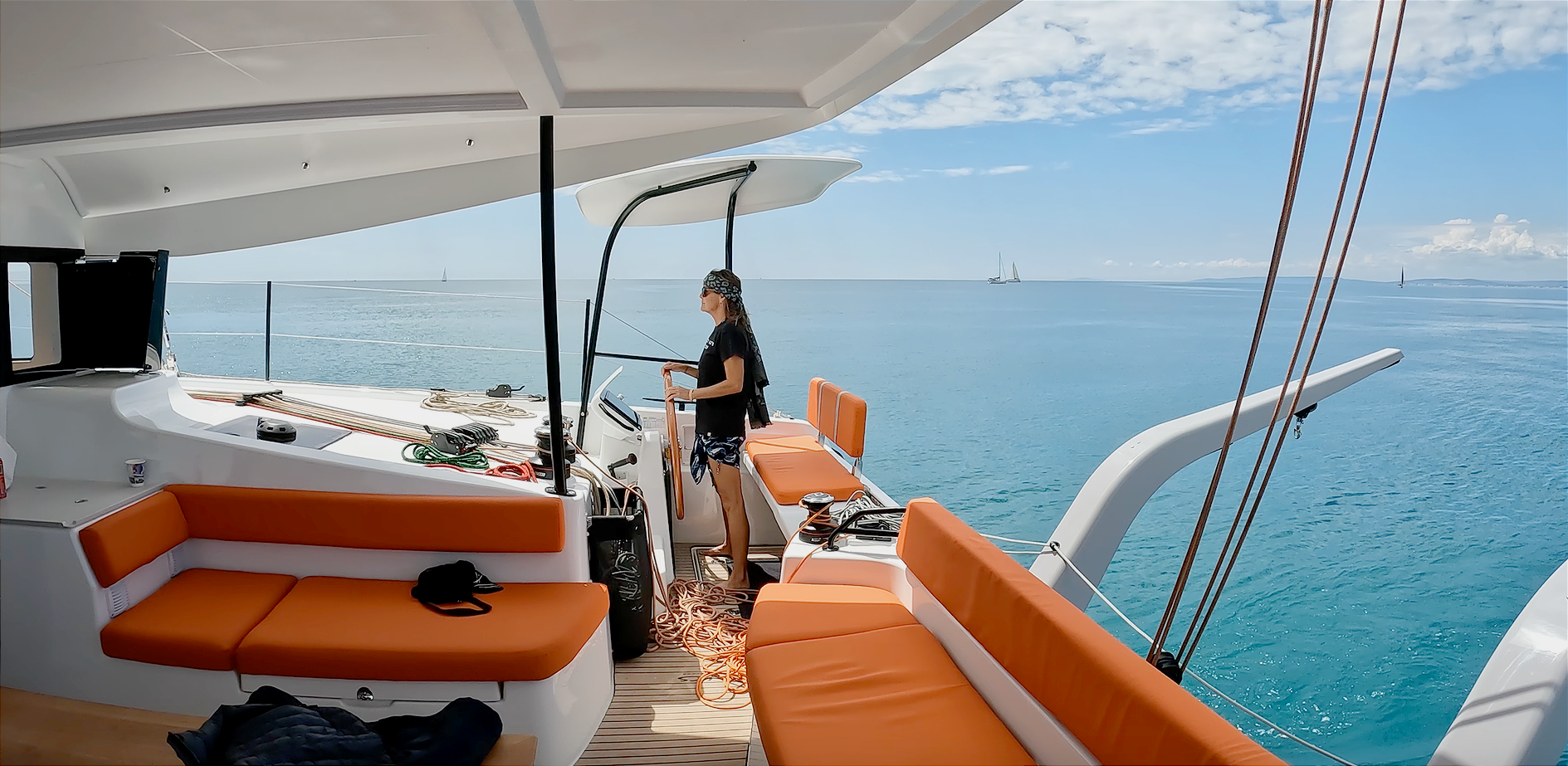
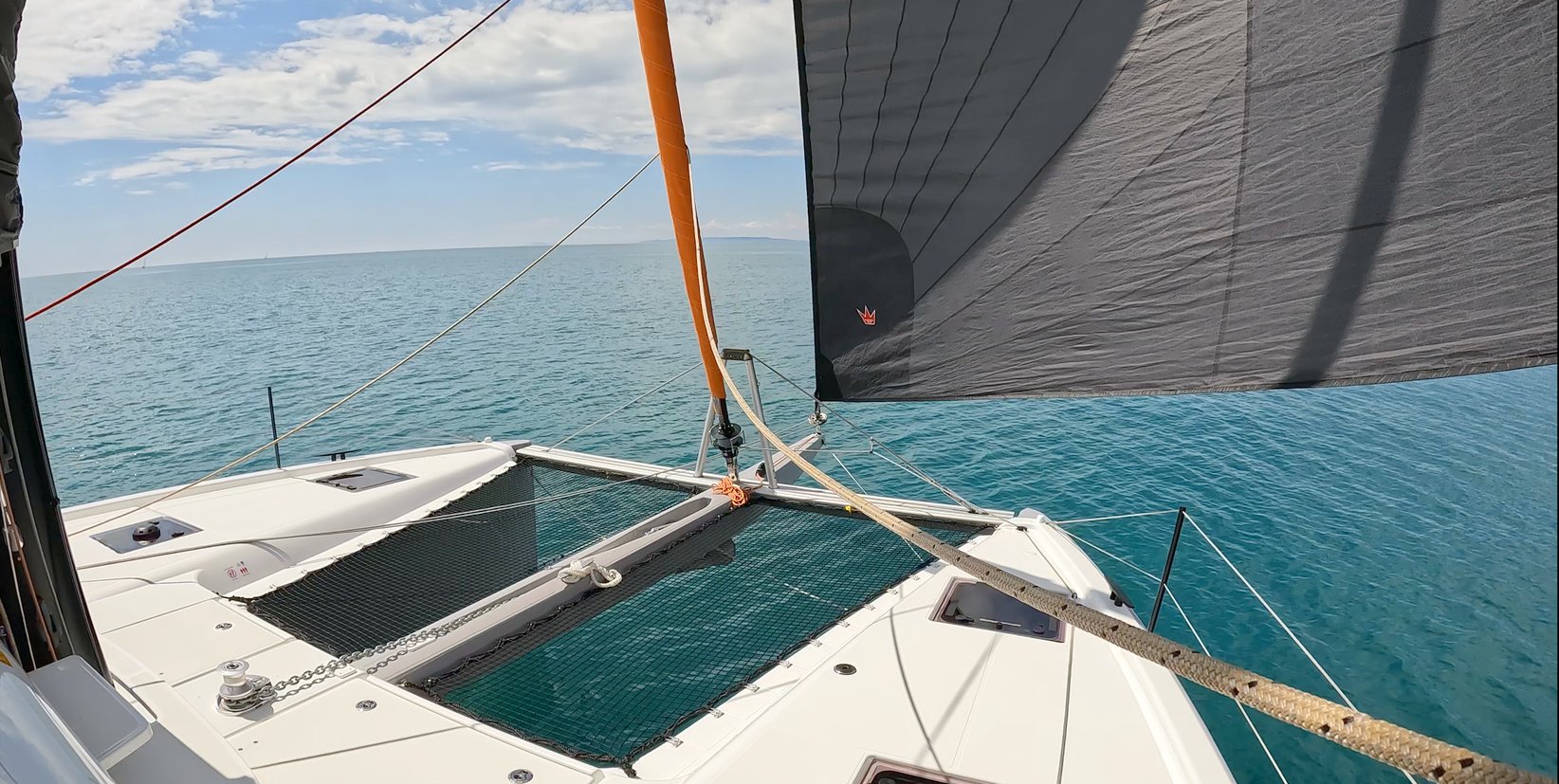
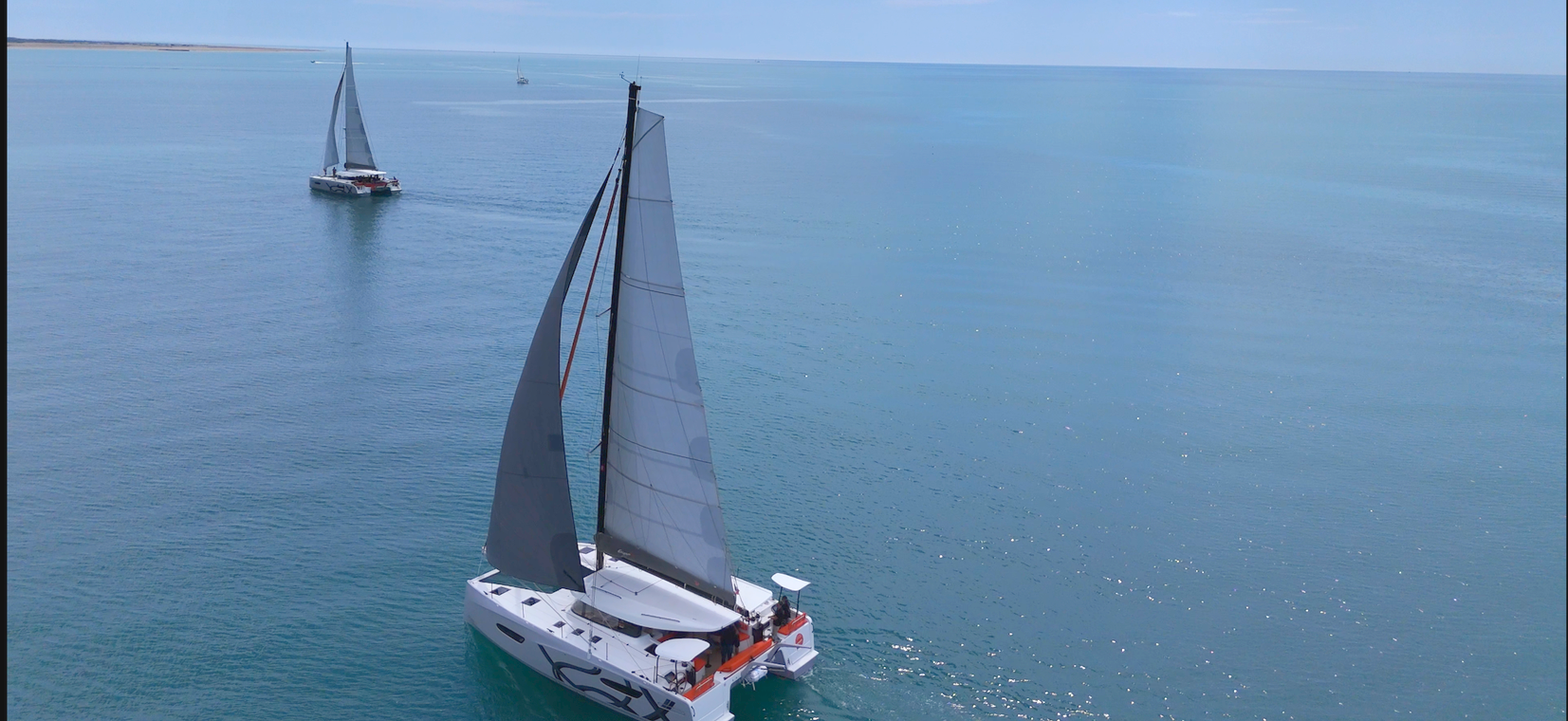
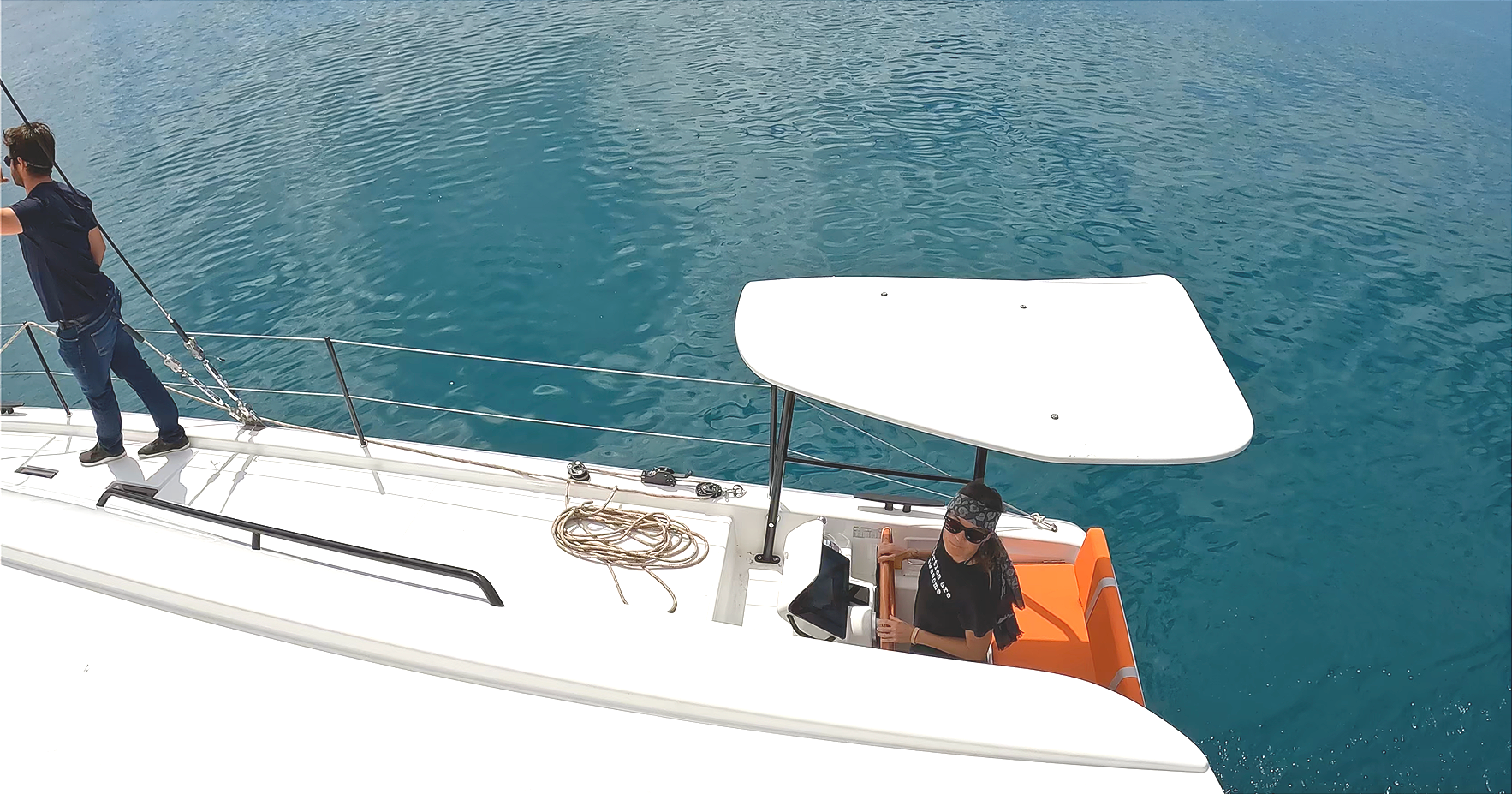
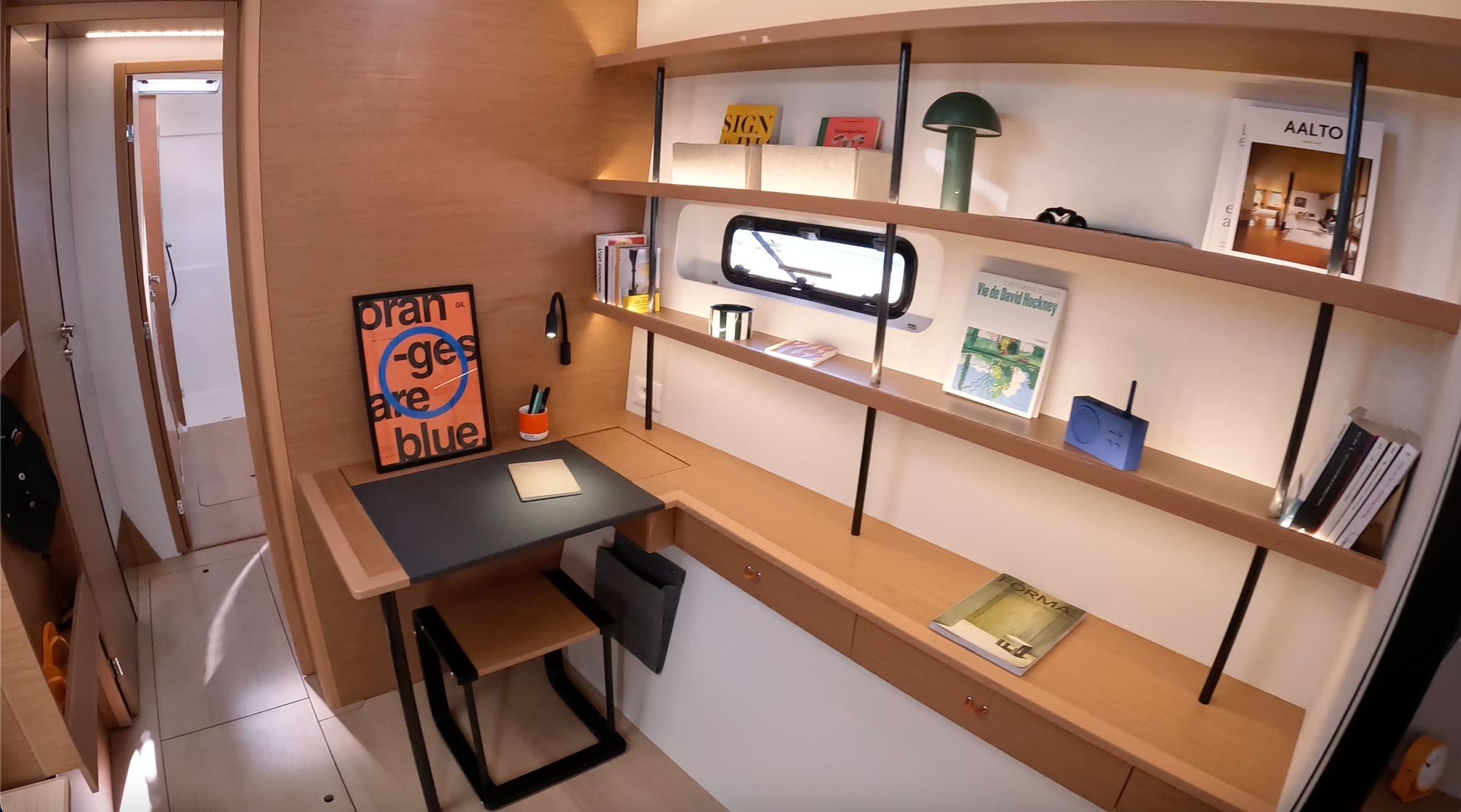
Spending the last few years in French Polynesia (still by far our favorite cruising grounds) has started to expose the issues with that theory.
In the middle of the unprotected Pacific, things pick up quite fast — not only in terms of winds, but also the sea states they quickly create. The crossings between islands (much less island chains) are also far longer than those in the Caribbean — meaning several-day crossings rather than hours. As a result, in most cases we’ve found ourselves picking weather windows based on sea state rather than wind speed/direction — but that obviously leaves us boxed in by the need for decent winds in order to sail (as we HATE the noise of running our engines).
As we cruised along, I noticed my brain was running the mental math despite myself. We’ve always been the first to tell those who come to us looking for help choosing their catamaran: “You spend 80–90% of your time at anchor… so pick the boat that’s going to be the most comfortable once you get there.”
That was, and is, obviously solid logic (and I stand by it), but I’d also be lying if I didn’t spend most of the sea trial inside the boat quietly questioning the black-and-white nature of that same logic.
While the captain took her hand at steering the boat, I spent plenty of time on deck enjoying what still seemed to be an impossible sail (especially later when the Excess 14 came out of the harbor and we caught ourselves trying to race her, despite having started well behind). I also spent a LOT of time in the cockpit and saloon trying to look at the boat through a slightly different lens — trying to imagine ourselves living aboard with this very different layout than what we've always known.
In the beginning, I really struggled... It’s fair to say that our current boat (a Bali 4.0) is the furthest extreme of comfort/livability. Worse, since we had never sailed — much less lived — on any other boat, it’s simply what we know a boat to be.
To anyone who has lived aboard anything other than a Bali, our concerns about the layout of this boat would no doubt seem absurd. It is, without question, at least as open and comfortable as any of our friends' catamarans — but also currently sailing along at speeds even their much larger boats wouldn’t dream of in these conditions.
When I think back to all our friends’ boats with more “traditional” layouts, we’ve never once found it uncomfortable to have a dedicated inside space and outside space. It’s just that those two spaces being merged on svKarma helped make the boat far more comfortable than a boat her size should be. (A 40' catamaran is about the smallest you’ll find — especially in a boat you’d even consider crossing oceans in.)
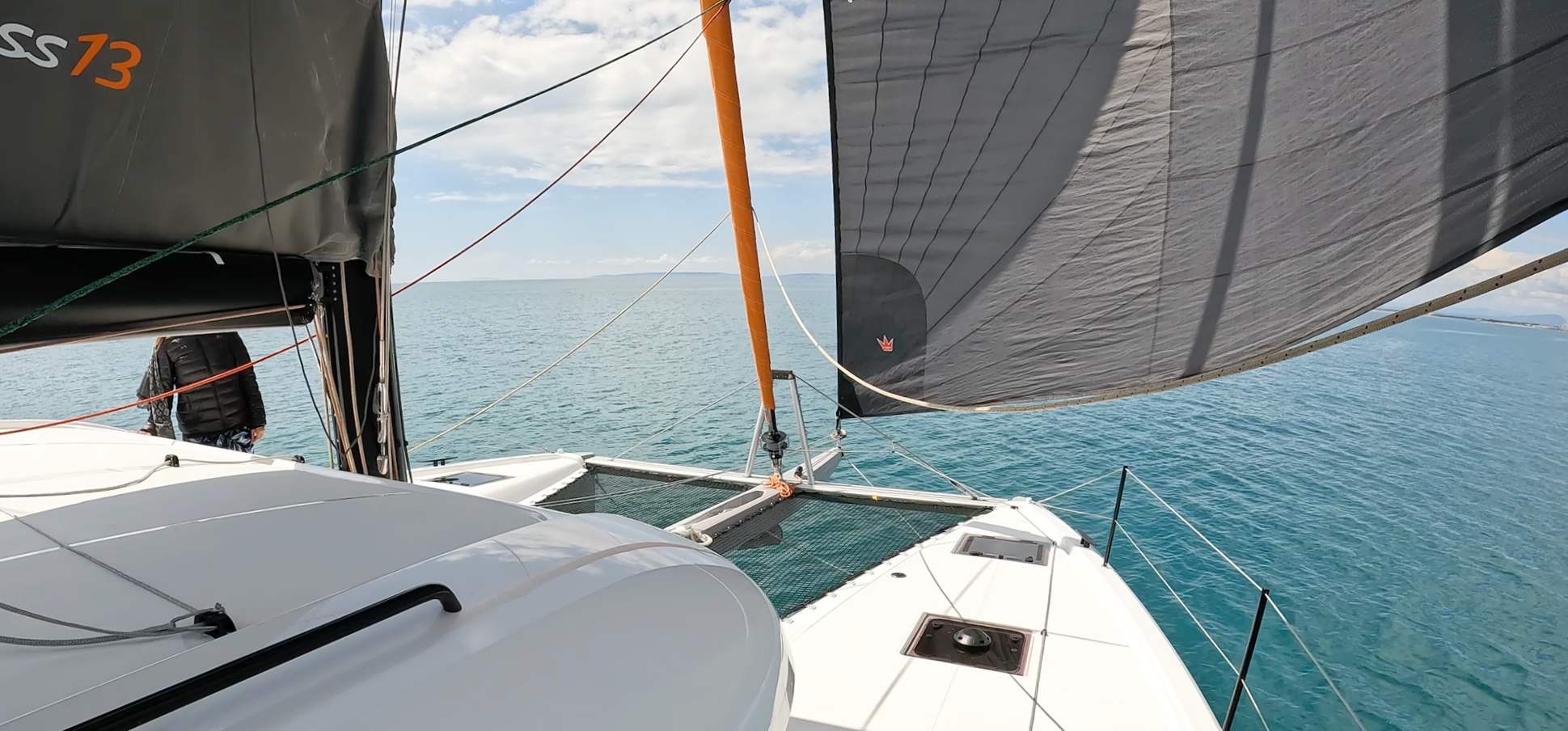
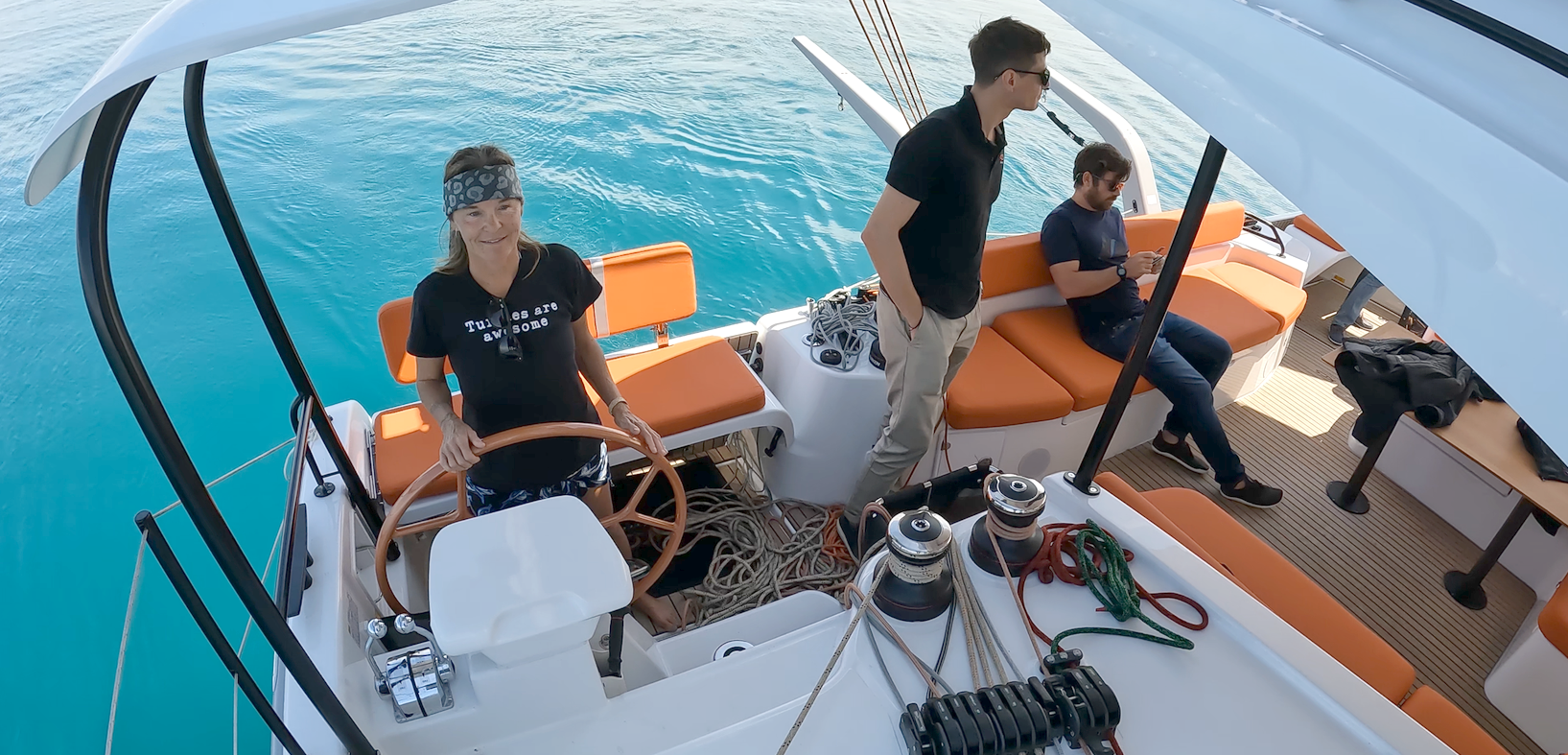
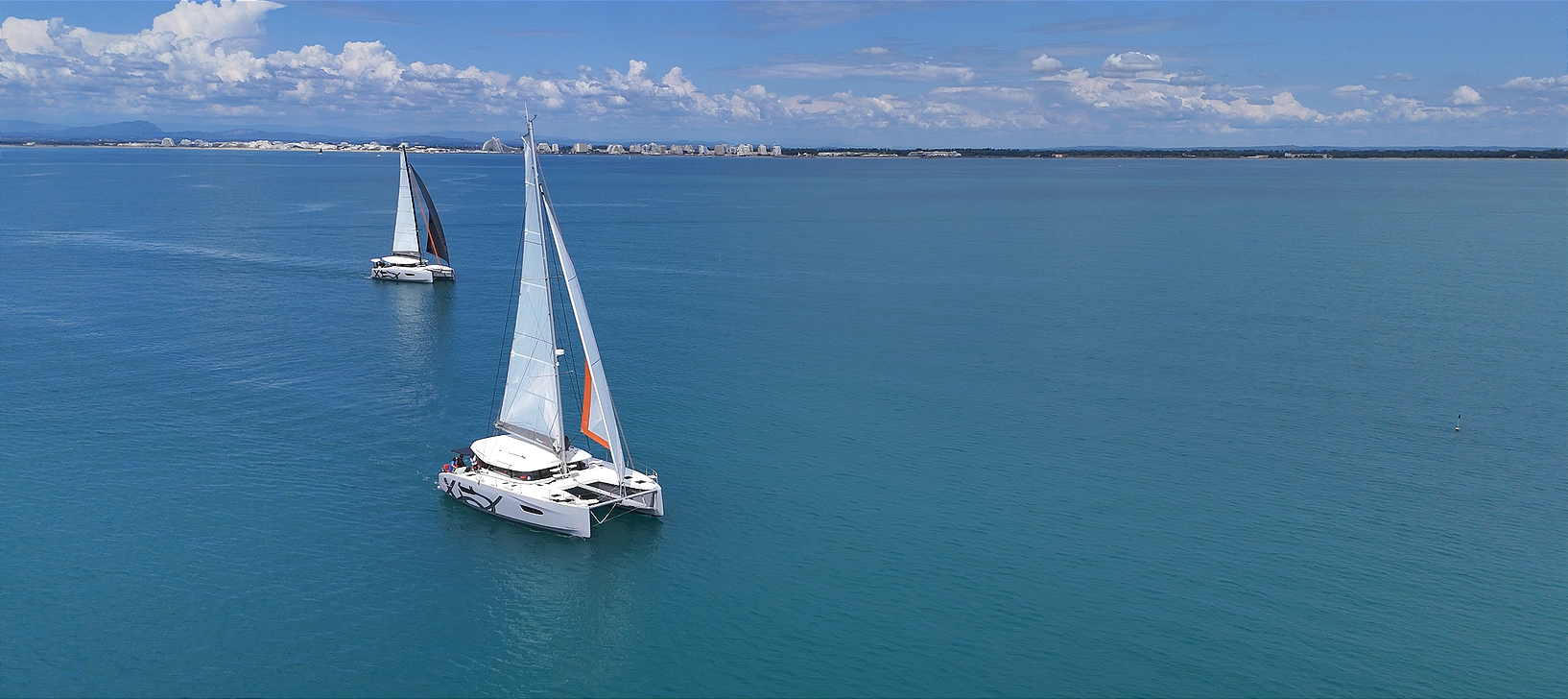
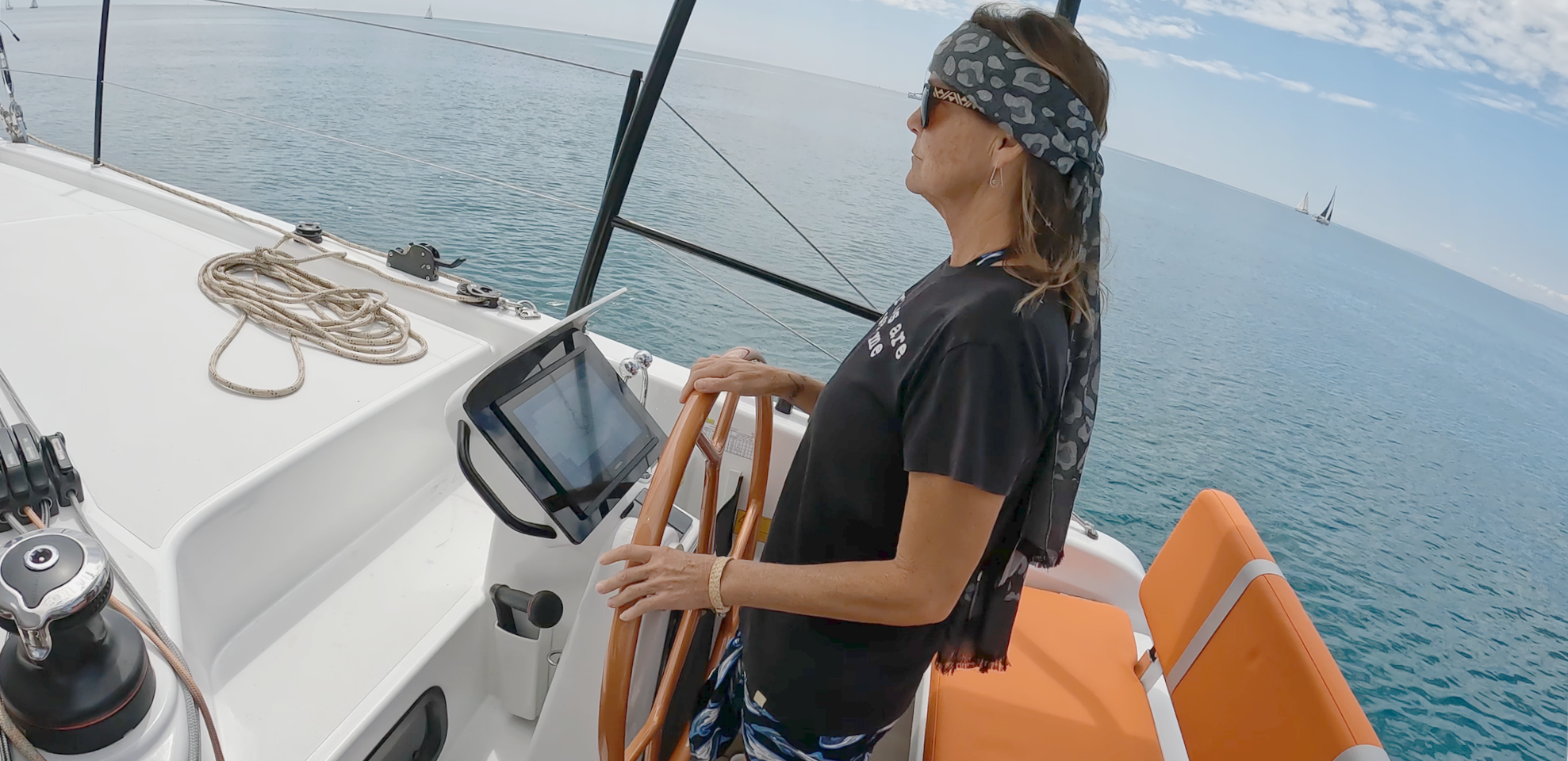
As I walked around the boat, while she sailed smoothly along in completely flat, calm seas (yet still faster than we would normally expect to go on Karma in any winds), it was pretty easy to imagine us onboard and living inside this very comfortable and well-appointed boat.
Down below, the hulls actually feel just as large (or larger) and comfortable as we’re used to. And the space up top is no smaller — likely larger — it’s just divided into inside and outside spaces instead of the shared space we're used to.
Factoring in even the chance of sailing in light winds — and the resulting smaller seas — and the comfort/confidence to sail in vastly more conditions and weather windows (with FAR less stress and anxiety about big seas or trying to plan and thread the needle before conditions worsen)… we really caught ourselves coming around to this concept.
The truth is, as much as we’ve loved the layout aboard Karma (and we DO love that layout), we’ve also paid the price for it in terms of comfort under sail and during our crossings.
Every time we catch ourselves preparing to hop to the next island, there’s still a certain degree of stress as we try to thread that impossible line between calm seas/zero wind (and having to motor, which we HATE), and big winds/seas that make the sail uncomfortable or even terrifying. (We’ve had our fair share of both.)
The key, as in all decisions, quickly comes down to balance — and finding the option that best allows for both: comfort once we arrive and are at anchor, and comfort/performance while underway.
I can assure you — as much as buying a comfortable floating condo will no doubt get the whole family excited about the prospect of living aboard, not everyone will enjoy the crossings and one scary crossing will start to limit how long that adventure lasts.
If I’m honest — the deep dive into boats that strike that “balance” started that same night when I got back online at the hotel. Sadly, the results and options aren’t great. There simply aren’t many options for performance boats that also live comfortably.
In fact, as I pointed out in an earlier post, based on what we saw and learned at the show — it seems most production brands are actually racing toward Bali’s end of the design spectrum: “comfortable at anchor.” Meanwhile, the few options that are high performers and are comfortable under sail are collecting in the opposite corner — and unfortunately, all well over a million dollars for a liveaboard-ready boat.
The more research and reflective thinking I did after our sail, the more impressed I continued to be with the Excess 13 and the balance it seems to have struck - even if I hate to admit it (and feel a bit like I'm cheating on svKarma).

Member discussion